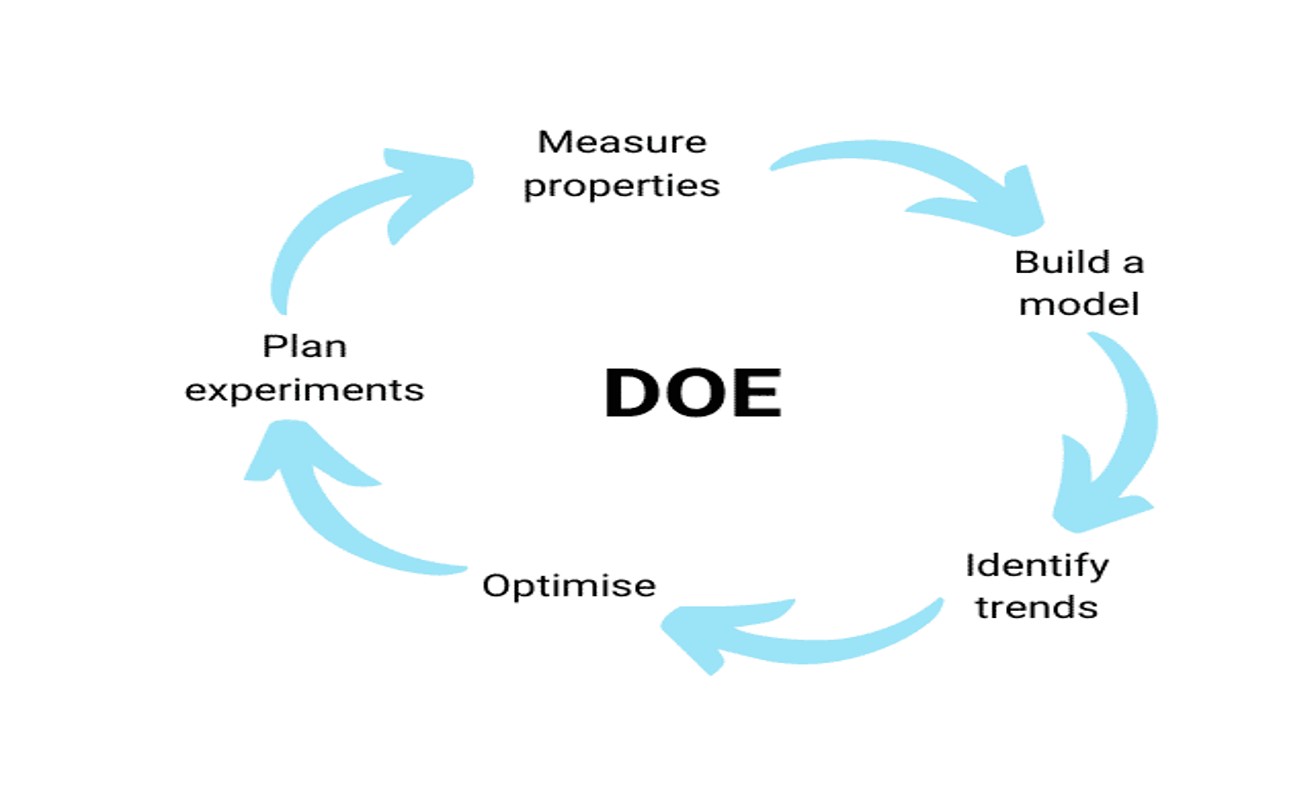Design of experiments (DOE) in chemical industry; to optimize processes, improve product quality, and reduce costs
Design of experiments (DOE) is a powerful tool that is widely used in the chemical industry to optimize processes, improve product quality, and reduce costs. By systematically manipulating variables and measuring the resulting outcomes, DOE enables scientists and engineers to identify the factors that have the greatest impact on a given process or product.
One of the key advantages of DOE is that it allows for the simultaneous testing of multiple variables, rather than making changes one at a time. This makes it possible to identify interactions between variables that may not be obvious when only a single variable is changed at a time. For example, a chemical manufacturer may use DOE to optimize the temperature, pressure, and reactant ratios in a reactor to maximize the yield of a desired product.
Another advantage of DOE is that it can be used to optimize multiple objectives at once. For example, a chemical company may use DOE to simultaneously optimize the yield, purity, and cost of a product. This is accomplished by using a multi-objective optimization technique, such as Pareto optimization, which identifies the optimal combinations of variables that balance multiple objectives.
There are several different types of DOE methods that are commonly used in the chemical industry, each with its own strengths and weaknesses. Some of the most commonly used methods include:
Factorial design: This method tests all possible combinations of two or more variables at a fixed level. This is useful for identifying interactions between variables and for identifying the most important variables.
Response surface methodology (RSM): This method uses a mathematical model to describe the relationship between variables and the response, and then uses optimization techniques to identify the optimal combination of variables. RSM is particularly useful for identifying the optimal operating conditions for a process or product.
Taguchi methods: This method uses a statistical approach to optimize a process or product by minimizing the variability of the response. Taguchi methods are particularly useful for robust design and for identifying the factors that have the greatest impact on product quality.
One example of the application of DOE in the chemical industry is the optimization of the production of bioplastics. Bioplastics are plastics made from renewable resources, such as corn starch or sugarcane, and have a lower environmental impact than traditional plastics. However, the production of bioplastics can be challenging due to the complexity of the chemical reactions involved.
A chemical company may use DOE to optimize the production of bioplastics by manipulating variables such as temperature, pH, and reactant concentrations. By testing all possible combinations of these variables, the company can identify the optimal conditions for maximizing the yield and purity of the bioplastic. They can also use DOE to identify the factors that have the greatest impact on the properties of the bioplastic, such as its strength and flexibility.
Another example of the application of DOE in the chemical industry is the optimization of catalysts. Catalysts are substances that speed up chemical reactions without being consumed in the process. They are widely used in the chemical industry to improve the efficiency and reduce the environmental impact of chemical processes.
A chemical company may use DOE to optimize the performance of a catalyst by manipulating variables such as the composition of the catalyst, the reaction conditions, and the flow rate of reactants. By testing all possible combinations of these variables, the company can identify the optimal conditions for maximizing the efficiency of the catalyst and minimizing its environmental impact.
In conclusion, DOE is a powerful tool that is widely used in the chemical industry to optimize processes, improve product quality, and reduce costs. By systematically manipulating variables and measuring the resulting outcomes, DOE enables scientists and engineers to identify the factors that have the greatest impact on a given process or product. Its ability to simultaneously test multiple variables, optimize multiple objectives.

